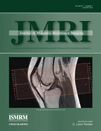Restricted canonical correlation analysis in functional MRI—validation and a novel thresholding technique
Abstract
Purpose
To validate the performance of an analysis method for fMRI data based on restricted canonical correlation analysis (rCCA) and adaptive filtering, and to increase the usability of the method by introducing a new technique for significance estimation of rCCA maps.
Materials and Methods
Activation data from a language task and also a resting state fMRI data were collected from eight volunteers. Data was analyzed using both the rCCA method and the General Linear Model (GLM). A modified Receiver Operating Characteristic (ROC) method was used to evaluate the performance of the different analysis methods. The area under a fraction of the ROC curve was used as a measure of performance. On resting state data the fraction of voxels above certain significance thresholds were used to evaluate the significance estimation method.
Results
The rCCA method scored significantly higher on the area under the ROC curve than the GLM. The fraction of activated voxels determined by thresholding according to the introduced significance estimation technique showed good agreement with the thresholds selected.
Conclusion
The rCCA method is an effective analysis tool for fMRI data and its usability is increased with the introduced significance estimation method. J. Magn. Reson. Imaging 2009;29:146–154. © 2008 Wiley-Liss, Inc.




